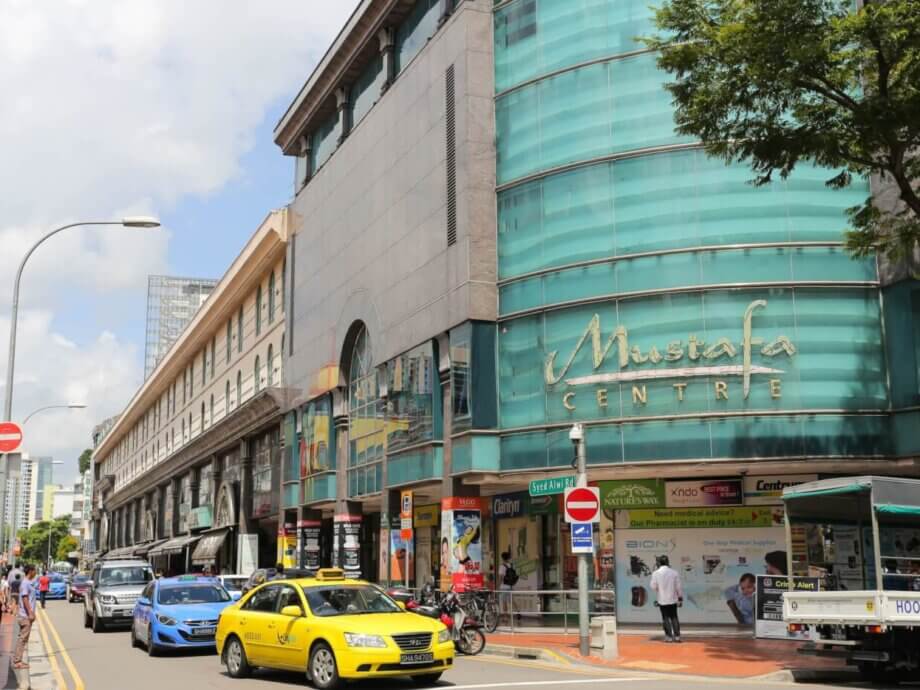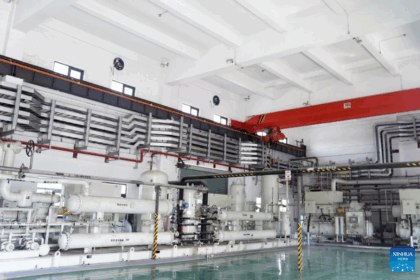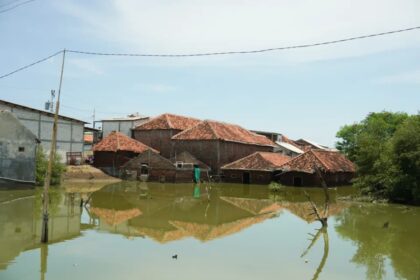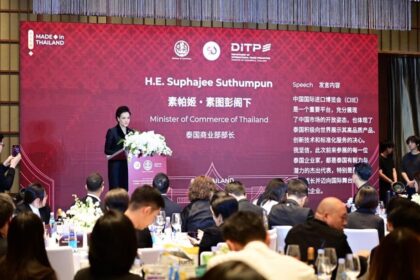Singapore Retailers Look to Johor Bahru: A New Frontier Amid Rising Costs
Singapore’s retail sector is at a crossroads. Facing high operational costs, intense competition, and a strong Singapore dollar, many retailers are now looking across the Causeway to Johor Bahru (JB), Malaysia, for expansion. The launch of the Johor-Singapore Special Economic Zone (JS-SEZ) and the upcoming Rapid Transit System (RTS) Link have further fueled this interest, promising lower costs, a larger market, and improved connectivity. Yet, the journey is far from straightforward. Retailers must navigate a complex landscape of labor shortages, bureaucratic hurdles, and infrastructure uncertainties. This article explores the motivations, challenges, and broader implications of Singaporean retailers’ push into Johor Bahru, drawing on industry insights, official statements, and the latest developments in the JS-SEZ.
- Singapore Retailers Look to Johor Bahru: A New Frontier Amid Rising Costs
- Why Are Singapore Retailers Expanding to Johor Bahru?
- The Johor-Singapore Special Economic Zone: Promise and Potential
- Opportunities: Lower Costs, Larger Showrooms, and New Markets
- Challenges: Labor Shortages, Bureaucracy, and Infrastructure Gaps
- The Role of the SEZ: Incentives, Infrastructure, and Policy Gaps
- Connectivity: The RTS Link and Beyond
- Competition and the Broader Economic Landscape
- In Summary
Why Are Singapore Retailers Expanding to Johor Bahru?
The primary driver for Singapore retailers’ interest in Johor Bahru is the stark difference in operating costs. Rental and labor expenses in Singapore have soared, squeezing profit margins and making it difficult for businesses to grow. In contrast, Johor Bahru offers lower rents, cheaper labor, and a growing appetite for higher-quality retail experiences. The strong Singapore dollar further amplifies these advantages, making cross-border expansion financially attractive.
Ernie Koh, President of the Singapore Retail Association (SRA), explains:
“There is an outflow of retail away from Singapore because of the higher costs of operating and the stronger Singapore dollar vis-a-vis many regional currencies, so many are opening front-end stores in Malaysia, Thailand and Japan. More are setting up operations in Johor Bahru and yes, this can be challenging for different reasons. But overall, it makes sense because the reliability of brands from Singapore commands a premium in Malaysia.”
Retailers are also motivated by the prospect of tapping into a dual market: local Johoreans and the significant number of Singaporeans who cross the border for shopping and services. According to industry estimates, up to 30% of shoppers in major JB malls are Singaporeans, especially on weekends.
The Johor-Singapore Special Economic Zone: Promise and Potential
The JS-SEZ, officially launched in early 2024, is a landmark initiative aimed at deepening economic ties between Singapore and Malaysia. Spanning over 3,500 square kilometers and covering nine flagship zones, the SEZ targets 11 economic sectors, including retail, manufacturing, logistics, digital economy, and tourism. The zone is expected to create 20,000 skilled jobs and attract 50 new businesses in its first five years, with ambitions to double these figures in a decade.
Singapore Prime Minister Lawrence Wong has described the SEZ as a “big plus” for firms seeking to leverage Singapore’s strengths in research and development and Johor’s abundant land and lower costs. The SEZ is designed to facilitate the freer flow of goods, people, and data, making it easier for businesses to operate seamlessly across the border.
Key incentives for businesses in the SEZ include:
- Special corporate tax rates (as low as 5% for up to 15 years for advanced industries)
- Personal income tax rates of 15% for knowledge workers for 10 years
- Entertainment duty reductions to boost tourism and leisure sectors
- Streamlined customs and immigration procedures, including passport-free QR code clearance
These incentives are primarily targeted at high-value sectors like AI, aerospace, and renewable energy, but there is growing advocacy for extending similar benefits to retail and service industries.
Opportunities: Lower Costs, Larger Showrooms, and New Markets
For many Singapore retailers, Johor Bahru represents a chance to escape the constraints of Singapore’s saturated and expensive market. Companies like QB House, a Japanese hair salon chain with 30 outlets in Singapore, have already opened their first JB branch and are planning more. Bedding company Epitex, with 24 outlets in Singapore, is also expanding into Johor, targeting both Singaporean visitors and Malaysians who work in Singapore but live in JB.
Retailers cite several advantages:
- Lower rental costs: Allow for larger showrooms and a wider variety of products at more competitive prices.
- Access to a growing middle class: Rising living standards in Johor mean higher expectations for quality and service, aligning with Singaporean brands’ reputations.
- Proximity to Singapore: The upcoming RTS Link, set to open by 2027, will make cross-border travel faster and more convenient, increasing footfall from Singaporean shoppers.
Joshua Koh, President of the Singapore Furniture Industries Council, notes:
“Because of high rental costs, Singapore retailers have to actively manage their offerings to maximise the rental yield. This is different in Johor where lower rentals mean retailers have much larger showrooms and a wider variety of products at significantly lower prices.”
Challenges: Labor Shortages, Bureaucracy, and Infrastructure Gaps
Despite the opportunities, Singapore retailers face significant hurdles in Johor Bahru. The most pressing challenge is the shortage of skilled labor. Many talented workers from Johor prefer to work in Singapore, where wages are higher. This creates a “brain drain” that makes it difficult for retailers to staff their JB outlets with qualified personnel.
Osamu Matsumoto, COO of QB House’s parent company, describes the situation:
“It has been quite challenging because the talented stylists prefer to go to Singapore, we’ve been trying to recruit for two months already. We have a few candidates but hopefully with this first store, more people here will recognise us and apply.”
To attract and retain talent, companies are offering competitive salaries, sometimes exceeding local market rates. However, this erodes some of the cost advantages of operating in Johor.
Other challenges include:
- Bureaucratic red tape: Obtaining permits, licenses, and approvals can be slow and complicated, with overlapping regulations from federal and state authorities.
- Foreign worker quotas: Malaysia imposes strict limits on the number of foreign workers in the services sector, making it harder for retailers to fill staffing gaps.
- Infrastructure uncertainties: Some malls in Johor Bahru have failed due to low footfall, leaving retailers wary of investing in locations that may not attract enough customers. Well-managed malls like Mid Valley Southkey and JB City Square are preferred, but competition for space is fierce.
Ernie Koh of the SRA cautions:
“There are well-managed malls and not-so-well-managed malls. We just have to be mindful that you just don’t go for the price.”
The Role of the SEZ: Incentives, Infrastructure, and Policy Gaps
While the JS-SEZ offers a framework for cross-border collaboration, many retailers feel that current incentives are skewed toward manufacturing, technology, and large-scale investments. The minimum capital expenditure required to qualify for some tax breaks (RM500 million) is out of reach for most small and medium-sized retailers.
Industry leaders are calling for:
- Lower thresholds for retail and service sector incentives
- Special grants or consultancy funding to help SMEs make the transition
- Streamlined, transparent processes for permits and approvals
- Enhanced infrastructure, including reliable power, water, and digital connectivity
There is also concern about the “build-as-you-invest” model adopted for SEZ infrastructure, where facilities are developed in tandem with confirmed investments rather than in advance. While this reduces the risk of overbuilding, it can lead to delays and uncertainty for businesses waiting for essential services to be completed.
Teh Kee Sin, advisor to the Small and Medium Enterprise Association of South Johor, highlights the dilemma:
“Would foreign investors come if they see that there is no assurance on basic infrastructures like Wi-Fi or electricity? All these are basic amenities and every investor would only go in if there is a guarantee these are already in.”
Connectivity: The RTS Link and Beyond
The upcoming Johor Bahru-Singapore Rapid Transit System (RTS) Link is widely seen as a game changer. Set to begin operations by 2027, the RTS will connect Singapore’s Woodlands North station to Johor’s Bukit Chagar station, with the capacity to ferry 10,000 passengers per hour in each direction. This is expected to ease congestion at the Causeway, reduce travel times to as little as 20 minutes, and make cross-border shopping and commuting more attractive.
However, experts warn that the RTS alone will not solve all connectivity issues. Local transport within Johor Bahru remains underdeveloped, and there are calls for additional infrastructure such as light rail, improved bus networks, and even new ferry or cable car crossings to disperse commuter traffic and support the SEZ’s growth.
Urban and transport planning specialist Goh Bok Yen notes:
“The transport system from their landing [in Johor Bahru] to their ultimate destination [further inland] is something we have not addressed.”
Efforts are underway to enhance customs and immigration procedures, including the introduction of QR code-based clearance and special business lanes, but full implementation will take time.
Competition and the Broader Economic Landscape
The JS-SEZ is not the only special economic zone in the region. Malaysia, Indonesia, and Thailand are all developing similar initiatives to attract foreign investment. This raises the stakes for Johor and Singapore to differentiate their SEZ through superior infrastructure, efficient governance, and a compelling value proposition for businesses.
There is also a delicate balance to strike between attracting international brands and supporting local retailers. Some fear that an influx of foreign retailers could drive up rents and crowd out small local businesses, undermining the diversity and resilience of the retail ecosystem.
Teh Kee Sin cautions:
“There is a concern that if too many of these international brands come in, the rent for shop lots will go up and many local retailers will be priced out. Small local businesses are important to the ecosystem as well.”
Nevertheless, most industry leaders remain optimistic that a growing economy will create opportunities for both local and foreign retailers, provided that policies are responsive and inclusive.
In Summary
- Singapore retailers are expanding into Johor Bahru to escape high costs and tap into a larger, more diverse market.
- The Johor-Singapore Special Economic Zone (JS-SEZ) offers incentives, improved connectivity, and a framework for cross-border collaboration, but current benefits are skewed toward large-scale, high-tech industries.
- Key challenges include labor shortages, bureaucratic red tape, infrastructure gaps, and the risk of investing in underperforming malls.
- The upcoming RTS Link and enhanced customs procedures are expected to boost cross-border retail activity, but local transport and infrastructure in Johor need further development.
- Industry leaders are calling for more inclusive incentives, streamlined processes, and balanced policies to ensure that both international and local retailers can thrive in the SEZ era.
- The success of Singaporean retailers in Johor Bahru will depend on their ability to adapt to local conditions, attract and retain talent, and navigate a rapidly evolving economic landscape.












